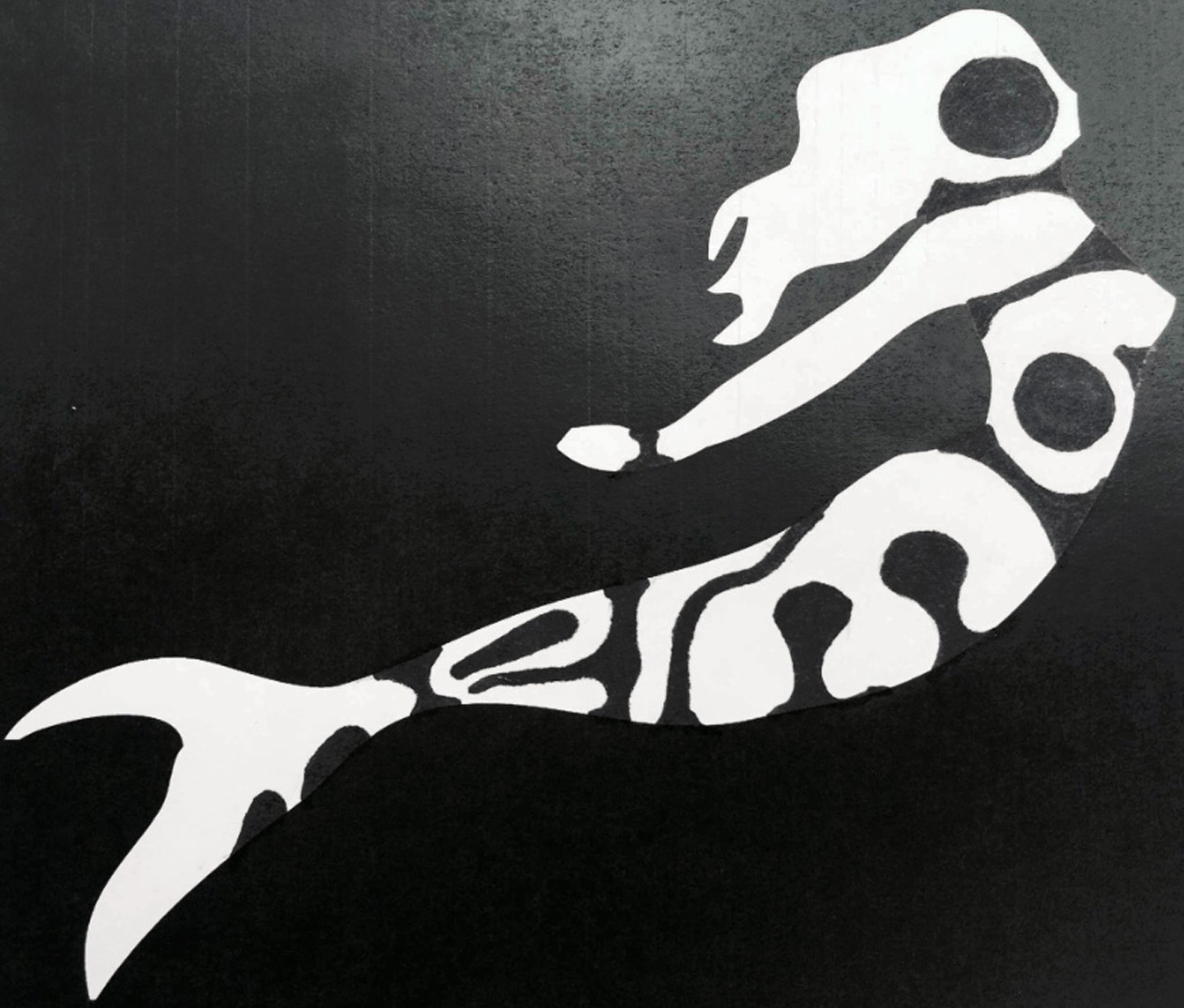“Legible compact calligrams”
Abstract:
A calligram is an arrangement of words or letters that creates a visual image, and a compact calligram fits one word into a 2D shape. We introduce a fully automatic method for the generation of legible compact calligrams which provides a balance between conveying the input shape, legibility, and aesthetics. Our method has three key elements: a path generation step which computes a global layout path suitable for embedding the input word; an alignment step to place the letters so as to achieve feature alignment between letter and shape protrusions while maintaining word legibility; and a final deformation step which deforms the letters to fit the shape while balancing fit against letter legibility. As letter legibility is critical to the quality of compact calligrams, we conduct a large-scale crowd-sourced study on the impact of different letter deformations on legibility and use the results to train a letter legibility measure which guides the letter deformation. We show automatically generated calligrams on an extensive set of word-image combinations. The legibility and overall quality of the calligrams are evaluated and compared, via user studies, to those produced by human creators, including a professional artist, and existing works.
References:
1. Adobe, 2010. Illustrator CS5 adobe.com/products/illustrator.Google Scholar
2. Andrews, T. 2012. Computation time comparison between matlab and C++ using launch windows. Research report submitted to American Institute of Aeronautics and Astronautics, California Polytechnic State University San Luis Obispo.Google Scholar
3. Aruoba, S. B., and Fernandez-Villaverde, J. 2014. A comparison of programming languages in economics. National Bureau of Economic Research, Working Paper 20263.Google Scholar
4. Cai, D., Chi, C.-F., and You, M. 2008. Assessment of english letters’ legibility using image descriptors. Perceptual and motor skills 107, 2, 618–628.Google Scholar
5. Campbell, N. D., and Kautz, J. 2014. Learning a manifold of fonts. ACM Transactions on Graphics (TOG) 33, 4, 91. Google ScholarDigital Library
6. Chellapilla, K., Larson, K., Simard, P., and Czerwinski, M. 2005. Designing human friendly human interaction proofs (HIPs). In Proceedings of the SIGCHI Conference on Human Factors in Computing Systems, CHI’05, 711–720. Google ScholarDigital Library
7. DeRose, T., and Barsky, B. A. 1988. Geometric continuity, shape parameters, and geometric constructions for catmullrom splines. ACM Trans. Graph. 7, 1, 1–41. Google ScholarDigital Library
8. Gal, R., Sorkine, O., Popa, T., Sheffer, A., and Cohen-Or, D. 2007. 3d collage: expressive non-realistic modeling. In Proceedings of the 5th international symposium on Non-photorealistic animation and rendering, ACM, 7–14. Google ScholarDigital Library
9. Goferman, S., Tal, A., and Zelnik-Manor, L. 2010. Puzzle-like collage. In Computer Graphics Forum, vol. 29, Wiley Online Library, 459–468.Google Scholar
10. Harris, C., and Stephens, M. 1988. A combined corner and edge detector. In In Proc. of Fourth Alvey Vision Conference, 147–151.Google Scholar
11. Helmond, A., 2010. Textaizer mosaizer.com/Textaizer.Google Scholar
12. Igarashi, T., Moscovich, T., and Hughes, J. F. 2005. As-rigid-as-possible shape manipulation. ACM Trans. Graph. 24, 3, 1134–1141. Google ScholarDigital Library
13. Jacobson, A., Baran, I., Popovic, J., and Sorkine, O. 2011. Bounded biharmonic weights for real-time deformation. ACM Trans. Graph. 30, 4, 78. Google ScholarDigital Library
14. Jin, C., and Wang, L. 2012. Dimensionality dependent pacbayes margin bound. In NIPS, 1043–1051.Google Scholar
15. Joachims, T. 2002. Optimizing search engines using clickthrough data. In KDD, 133–142. Google ScholarDigital Library
16. Kendall, M. G. 1938. A new measure of rank correlation. Biometrika 30, 1/2, 81–93.Google Scholar
17. Kim, J., and Pellacini, F. 2002. Jigsaw image mosaics. ACM Transactions on Graphics 21, 3, 657–664. Google ScholarDigital Library
18. Kovesi, P., 2006. Matlab and octave functions for computer vision and image processing. http://people.csse.uwa.edu.au/pk/Research/MatlabFns/index.html.Google Scholar
19. Liang, L., and Grauman, K. 2014. Beyond comparing image pairs: Setwise active learning for relative attributes. In 2014, 208–215. Google ScholarDigital Library
20. Lipman, Y., Levin, D., and Cohen-Or, D. 2008. Green coordinates. ACM Trans. Graph. 27, 3. Google ScholarDigital Library
21. Loomis, J. M. 1990. A model of character recognition and legibility. Journal of Experimental Psychology: Human Perception and Performance 16, 1, 106–120.Google ScholarCross Ref
22. Luo, L., Shen, C., Liu, X., and Zhang, C. 2015. A computational model of the short-cut rule for 2d shape decomposition. IEEE Transactions on Image Processing 24, 1, 273–283.Google ScholarCross Ref
23. Maharik, R., Bessmeltsev, M., Sheffer, A., Shamir, A., and Carr, N. 2011. Digital micrography. ACM Trans. on Graph 30, 4, 100:1–100:12. Google ScholarDigital Library
24. O’Donovan, P., Libeks, J., Agarwala, A., and Hertzmann, A. 2014. Exploratory Font Selection Using Crowd-sourced Attributes. ACM Transactions on Graphics (Proc. SIGGRAPH) 33, 4. Google ScholarDigital Library
25. Parikh, D., and Grauman, K. 2011. Relative attributes. In ICCV, 503–510. Google ScholarDigital Library
26. Phan, H. Q., Fu, H., and Chan, A. B. 2015. Flexyfont: Learning transferring rules for flexible typeface synthesis. Computer Graphics Forum 34, 7, 245–256. Google ScholarDigital Library
27. Russell, S. J., and Norvig, P. 2010. Artificial Intelligence – A Modern Approach (3. internat. ed.). Pearson Education. Google ScholarDigital Library
28. Sheedy, J. E., Subbaram, M. V., Zimmerman, A. B., and Hayes, J. R. 2005. Text legibility and the letter superiority effect. Human Factors 47, 4, 797–815.Google ScholarCross Ref
29. Weber, O., Ben-Chen, M., and Gotsman, C. 2009. Complex barycentric coordinates with applications to planar shape deformation. In Computer Graphics Forum, vol. 28, Wiley Online Library, 587–597.Google Scholar
30. Wikipedia, 2014. Calligram — wikipedia, the free encyclopedia. {Online; accessed 9-October-2014}.Google Scholar
31. Xu, J., and Kaplan, C. S. 2007. Calligraphic packing. In Proceedings of Graphics Interface 2007, ACM, 43–50. Google ScholarDigital Library
32. Xu, X., Zhang, L., and Wong, T.-T. 2010. Structure-based ascii art. ACM Trans. Graph. 29 (July), 52:1–52:10. Google ScholarDigital Library
33. Zhu, J.-Y., Agarwala, A., Efros, A. A., Shechtman, E., and Wang, J. 2014. Mirror mirror: Crowdsourcing better portraits. ACM Trans. on Graph 33, 6. Google ScholarDigital Library
34. Zitnick, C. L. 2013. Handwriting beautification using token means. ACM Trans. on Graph 32, 4, 53:1–53:8. Google ScholarDigital Library





